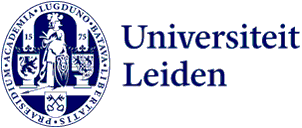
Archaeologist Maikel Kuijpers signs international book contract with Penguin Press
Back in 2020, Dr Maikel Kuijpers started to write for The Correspondent. His articles offered readers a unique long-term insight into the materials that shape our world, from concrete to glass and plastics. His innovative approach piqued the interest of a literary agent, and he was invited to write a book proposal. ‘In a week, 14 English-language publishers were trying to win me over to sign a book deal with them.’

Public outreach
Kuijpers has always been interested in public outreach of archaeology. ‘One of the reasons I started to write for The Correspondent is that I believe that our discipline can play a role in societal challenges.’ In his articles, Kuijpers looked at the materials that shape the human world. ‘I did this in my spare time because I enjoyed exploring how my knowledge applies to the wider world, and it gave me a bit more freedom compared to academic pieces. You can be a bit more creative.’
The articles in The Correspondent paid off in an unexpected way. ‘In March 2021, I got an email from a literary agent with the question of whether I’d like to write a book on this topic. This immediately grabbed my attention. If we want to make an impact in the world outside academia, this is the road forward. It is with a book like this.’
‘Big idea’ books
The past years have seen a number of popular ‘big idea’ books, like Sapiens by Yuval Noah Harari, The Dawn of Everything by David Graeber and David Wengrow, or Humankind by Rutger Bregman. ‘It always strikes me how quickly we are criticizing such books. But when you ask the first-year students, it is these kinds of books that they’ve read and that draw their attention to our field in the first place.
Now I am going to write such a book myself, though I’d never expected it to become this big.’ Kuijpers spent 1.5 years writing a detailed proposal before sending it to his agent. ‘I expected not to hear anything back for at least three months, like with any research proposal. Instead, a few hours later, I got a reply: Penguin Press is interested.’
It would not end there. ‘In a week, 14 publishers in the UK alone were competing over this proposal.’ And it was the same for the USA and for translation rights. In the Netherlands, all the big publishers were interested. ‘This turned my world upside down. Instead of me trying to convince a research committee to fund my research, all these publishers were pitching to me why they were the best option for my book. I was talking to some of the best editors out there!’ Finally, Kuijpers decided to go for Penguin Press, both in the UK as well as in the US, and for Nieuw Amsterdam for the Dutch translation. Meanwhile, several more translations have been confirmed, and his book will be published in 10 more languages, from Chinese to French and Japanese to Italian.

Fundamental materials
In the book, Kuijpers will focus on the eight fundamental materials that make the modern world possible: concrete, wood, steel, plastics, bricks, fertilizer, soil, and glass. ‘Through material histories, I’m writing human history. The book leans on the perspective that I also teach in my theory class: How materials shape the human world.’ The interested publishers see a wide audience, including engineers, sustainability experts, and material scientists. ‘I will be focusing on the core catch-22 of the 21st century: the materials that we build our civilisation with are destroying our civilisation as well.’
Archaeological perspective
The only thing now needed for the book to materialise is time. ‘Luckily, the publishers made it possible for me to take a full year of leave from August 2023 to 2024. The only thing I have to do in this period is write the book.’ Since the book is an interdisciplinary look at materials, Kuijpers will also spend time at the Materials Science and Engineering department at Technical University Delft, as well as at the Institute of Environmental Sciences. ‘But it is the archaeological perspective that, in the end, is the core of this book, both in the sense of material culture as well as the long-term scope. A combination of those factors is precisely what we need if we want to create a more sustainable society.’
